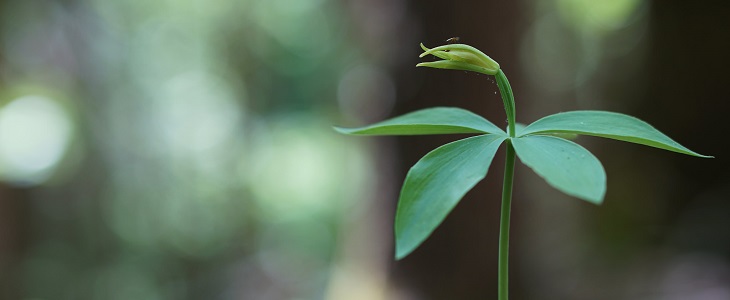The State We're In
Planning Ahead to Protect NJ’s Biodiversity
by Alison Mitchell, Co-Executive Director, New Jersey Conservation Foundation
Ever heard of the State Wildlife Action Plan – or its more common name, “SWAP”? The same way a budgeting app lets you know you’re spending too much and should start saving now so you don’t starve later, a SWAP compels state leaders to compile a list of species whose ranks are thinning, and to make a plan to do something about it. The idea is the same: act now, stave off dire consequences later.
Every state, plus a few territories and Washington, D.C., has a SWAP. A coordinated effort to craft them got liftoff in 2000, when Congress recognized that there’s value, economic and otherwise, in proactively addressing the needs of species before they’re officially labeled threatened or endangered. SWAPs have since become our nation’s blueprint for keeping an eye on wildlife species that are declining but not yet classified as in trouble.
There’s now a chance to weigh in on a 2025 revision of New Jersey’s SWAP. Last year, the New Jersey Department of Environmental Protection’s Fish and Wildlife division opened a bid for public comments on our SWAP’s list of animals that fit the category of Species of Greatest Conservation Need (SGCN). Until July 12, they’re accepting public input, via their website, about plant and fungi species they’ve identified as SGCNs. What they’re looking for: Insights on species that might have been overlooked and thoughts on how we can better conserve the plants and fungi that need conserving (general comments are also welcome). So far, Fish and Wildlife has combed through more than 50 such comments, said Kim Korth, Fish and Wildlife’s SWAP coordinator.
You don’t need to be a biologist, conservationist, or even a nature lover to understand why gathering a wide swath of input on New Jersey’s vulnerable flora and fauna matters. A meticulously crafted SWAP, with input from stakeholders from a range of backgrounds, is good for people and business as well as plants and other animals.
Recovering a fish species by restoring a wetland, for example, not only benefits that species but can improve local water quality, protect the nearby community from flooding, and create jobs. On the other hand, if a species is in such bad shape it qualifies for the emergency room measures of the endangered list, it’s more difficult, and more expensive, to recover.
Fish and Wildlife’s callout in May for input on plants and fungi is its third public appeal for suggestions for the 2025 SWAP, and it won’t be the last. Korth expects the next opportunity for public comment to be announced on the division’s website this fall. The final draft will likely be shared with the public for comment by May 2025, she said. The timing of these callouts isn’t random. Next year, states are required to submit their revised plans to the U.S. Fish and Wildlife Service, a precondition for receiving funds from the State and Tribal Wildlife Grants Program.
The appeal to the public to get involved reflects the scope of the current revision. “It’s pretty major,” Korth said. “We’re putting into play comments we’ve been receiving since 2018,” when the last big revision was submitted. Since then, “there’s been a lot of feedback about what needs to be improved.” Another reason the revision is weightier than in past years: Until now, plants and fungi have been excluded from the SGCN list!
Their addition to the revised SWAP has been in the works for years. “It was a vision we wanted to include in the last revision,” Korth said, but the department lacked the resources. Now, “more states, especially in the Northeast, are adding them. We’ve gotten better at this.”
In 2025, animals like the bog turtle and the Eastern box turtle — both dwindling, both critical parts of their ecosystems —will be joined by 100 vascular plant species (Pickering’s Morning Glory, Hirst Brothers’ Panic Grass, the rare orchid Small Whorled Pogonia, Broom Crowberry, Bog Rosemary, and Wild Bleeding-heart are examples), 17 non-vascular plant species (such as Florida Largeleaf Peat Moss), and 11 species of fungi.
Korth and her team will address what she called “actions” to protect the SGCNs as the SWAP revision rolls on. “We’re focused on habitat improvement and threats to habitats,” she said. For example, crabbing is a threat to diamondback terrapins, so Fish and Wildlife might ask for input from recreational and commercial crabbers. “And illegal poaching and collecting is a threat to all our turtles, so there will be an action that manages that.” One more action she’s looking forward to implementing is connectivity. “Basically, animals need to move, and for that they need connected habitats. That’s a huge issue for us in New Jersey.”
The implementation of the new SWAP could be huge for New Jersey. “If this revision can help us focus the efforts of our conservation partners, and if we can collectively focus our time, money, and talents on actions that will make a difference, we can really improve the outcome for these species in the next 10 years,” Korth said.
To find out more about New Jersey’s SWAP, and to get updates on calls seeking public comments, go to https://dep.nj.gov/njfw/news-2024-05-21-njdep-fish-and-wildlife-seeks-public-comment-on-the-list-of-rare-plant-and-fungi-species-of-greatest-conservation-need-sgcn/#:~:text=NJDEP%20Fish%20%26%20Wildlife%20(NJFW),costly%20to%20protect%20or%20restore.
And for information about preserving New Jersey’s land and natural resources, visit the New Jersey Conservation Foundation website at www.njconservation.org or contact me at info@njconservation.org.
About the Authors
Alison Mitchell
Co-Executive Director
John S. Watson, Jr.
Co-Executive Director
Tom Gilbert
Co-Executive Director, 2022-2023
Michele S. Byers
Executive Director, 1999-2021
View their full bios here.
Filter
Get The Latest News
From The Garden State
In the
News

